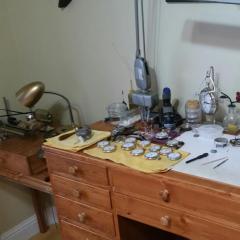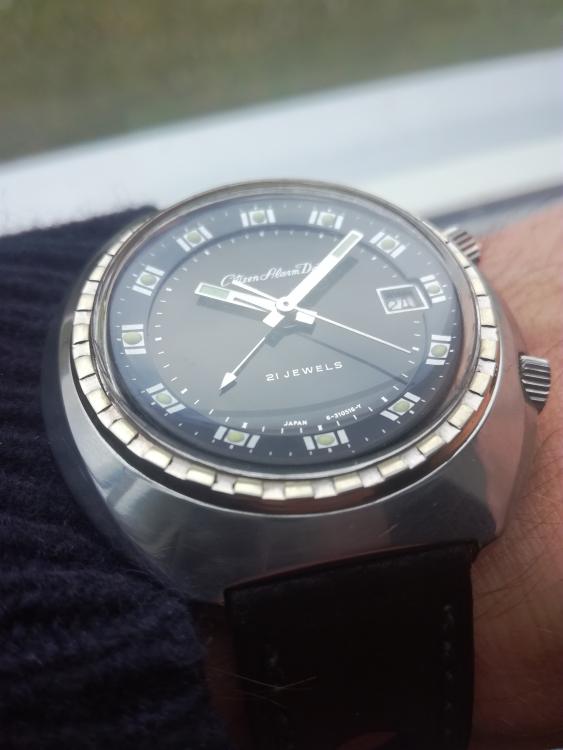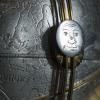Leaderboard
Popular Content
Showing content with the highest reputation on 02/16/18 in all areas
-
It usually works best for me to reread the original question and I noticed you said the last three Elgin watches? So are all three washers identical from all three watches? Then background history? Where they running before did they come from eBay different sources for all three? One clue of why I am asking is you don't know how many parts are original that definitely suggests a problem. What's interesting with American pocket watches are there mass-produced. If you look at the parts catalog you'll see that the parts will interchange except the reality is there usually hand fit. At least a lot of the parts some parts do interchange. There are some YouTube videos showing assembly of American pocket watches and you can see that as the parts go in somebody is adjusting to fit. So the more parts that are swapped and interchanged in American pocket watch the less likely you are to get it to run right without a lot of work. Then I'm attaching 3 separate PDFs. The Swigart American Watch Movements Is almost a must have if you're working on American pocket watches. Doesn't list every watch but shows the parts for the various sizes of watches. And as a bunch of reference material like all different mainsprings found in pocket watches. Then PDF Elgin parts catalog from 1915 which unfortunately lists the parts alphabetically. Then what's interesting that the various parts catalogs are how the watches are described. For instance 12 size Illinois has a whole bunch of variations but really comes down to about five different models that all the parts supposedly interchange over the entire manufacturing history which they do not. So for Elgin yours is listed as a 12 size 3d model class 114 That I have a PDF of that page so you can see that. Then before we go looking for washers in the parts catalog we need to discuss terminology? Terminology in horology is interesting because it changes with location and time. Or simplistically some parts will go by whole variety of names depending upon when the publication was done and where. Then it be nice to get a better picture of your washer and the side view click doesn't exactly look flat to me it just doesn't look right at all before we start looking at washers. So the first washer found on page 110 you would normally never see. So we see that this is a center staff washer and what the heck is a center staff? So universally we think of staff and balance wheel but the terminology paragraph will tell us that there other parts that can go by the name staff found in the watch. So not always labeled is safety pinion? When the main spring break six release a lot of bad energy which will break things so the safety pinion unscrews itself from the center wheel staff. Sometimes found underneath is a flat steel washer.. So part number 1555 would be yours it would be flat shiny steel. Then on page 111 winding wheel and ratchet wheel washers. Winding wheel in our terminology is crown wheel. Some watches will have a washer under the screw holding the part in place. Then this is usually a machined washer is a recess for the screw and as you can see comes a variety of decorative finishes. Then as mentioned above under the crown wheel/winding wheel sometimes is found a steel washer but Elgin doesn't Seem to have it so it's probably called something else. Maybe crown wheel spacer or something and that's not always universal and yours doesn't have that based on the link below. Link below someone is disassembled the model 315 and any of the washers mentioned above other than the safety opinion washer which of course we can't see none of the rest are visible. http://www.rdrop.com/~jsexton/watches/museum/elgin28563994.html Swigart American Watch Movements 12 size.pdf 1915 Elgin Catalog ( All Illustrations ) washers.pdf 1915 Elgin Catalog ( All Illustrations )315 .pdf1 point
-
If the small price difference is not important to you, my recommendation would be for the original Swiss mov.t (Unitas), Seagull grades their mov.t, and the cheapest ones are prone that nasty problems. read: http://www.asian-watches.com/2016/04/a-warning-about-seagull-st-3600-vs-eta.html1 point
-
Yes. I find it a bit difficult to read, I actually have to study it sentence by sentence. I also have Henry B. Fried's book which is easier to understand. The serial number of the watch is 15847291 which is a 12s Grade 315 15J Open Face Double Roller made in 1911. Elgin made over a million of these. I don't know how many parts are original. Some of the wheels are a tight fit in the jewels which doesn't seem right but they all mesh.1 point
-
1 point
-
Hey Guys, First of all I wanted to thank you again for All your help and advices. So I finally managed to take some time and work on the faulty project. Following the advices I disassembled the balance assembly, passed everything on the ultrasonic and put it back together. It took me a longtime and I was loosing patience at the end. Mostly because it was my first time tearing down the balance. I followed the videos on how to deal with the hairspring by Mark L. As an introduction and they helped me a lot. I believe my work can be improved by using a better magnification (which I will be looking for) but it is not bad for a first time. The watch is assembled and running.... Now I will wear it and see how it runs. Not having a timegrapher I am not able to verify its accuracy but I will keep comparing with my other watches. At the same time I was able to do the same for another project : a 7005 which was in an awful state when I got it. Scrap movement to study.... But I managed to get it running again which makes me very happy. (Dial was so rusty that cleaning it meant taking out all original marks) it will become my first experimental painting project... Hopefully in a near future. I learned a lot! David Sent from my Mi Note 3 using Tapatalk1 point
-
1 point
-
Not odd at all. Perhaps it's because this is a message board that is dedicated to watches. If you go to a website that concentrates on the Consumer Protection Bureau (or other such thing), you'd hear plenty about white-collar crime. I, for one, certainly don't condone it, nor ignore it. I just don't tend to mention it here on watchrepairtalk.com.1 point
-
" the flat washer mystery" some repair men will put a shim under the balance bridge if they are too lazy to shorten the balance stem. the washer on hand can be the " spring washer" under the dial. cheers, vin1 point
-
I use a piece of rodico to stick the pallet fork to the upper plate, then remove it after assembly. I do a lot of pocket watches. Sent from my GT-N5110 using Tapatalk1 point
-
Most of the work I do is on these old pocket watches, and I can say that getting a clean reading on a time machine IS possible, there are just a lot of things to look for. Rubbing of the hairspring is one, but the alignment of the spring within the regulator pins is a big one. The pins should not pinch the spring, it should sit between them with the tiniest of space on either side, throughout the movement of the regulator. Make sure the pins are perpendicular to the bridge, not angled in or out. Moving the regulator to its extremes should not significantly disturb the shape of the hairspring. It takes very small adjustments to get it all right, but I've done it, andI'm no where near a pro. Mark has a good video on adjusting hairsprings, I'd have a look. Also getting the dial up/down positions aligned timing wise is the first step, and most of that is done with making sure the end shake is proper, and there are no parts binding in one position or the other. Sometimes with too much end shake the pallet fork will contact the roller table and cause crazy noise and erratic beat readings on the timer. It just takes time and patience but it can be tracked down. Here's a great website that covers the subject very well and thoroughly. adjustingvintagewatches.com1 point
-
1 point
-
It's always good to have the right gear on when you go out, but whether anyone else likes it could be a matter of a pinion. Sorry, for the wind up!1 point






